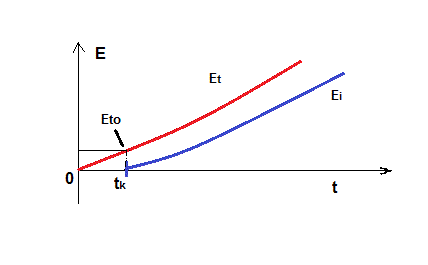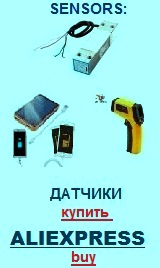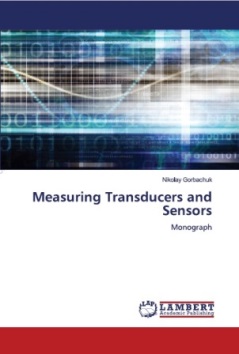Transducers, gauges, sensors - Information portal © 2011 - 2025 Use of material is possible by placing an active link
Calculation of the temperature on the value of the thermopower thermocouple
Depending on the required accuracy, the temperature on the value of the thermoelectric power (E.M.F) of thermocouple can be calculated in different ways.
For rough measurements when sufficient accuracy of a few degrees, you can use calibration tables and their data, and readings of the voltmeter (galvanometer), which measures the value of thermoelectric power to determine the temperature. Moreover, if the thermocouple is included under the chart and the free end of the fig.A is at 0 ° C, the temperature is above a certain manner indicated by the value of thermoelectric power between the working and free junctions must coincide with the true temperature of the working junction of the thermocouple (within the error).
If you are using a simple circuit for the thermocouple fig. В (relatively speaking the free end of the thermocouple is at room temperature and EMF in a thermocouple is generated due to temperature difference between the working junction and bedroom), you need to make a correction when using tables.
For example, the temperature in the working area of the junction can be determined from the measured EMF (Ei) folded with EMF table (Eto) for a given room temperature (the temperature at which the measuring device is): E = Ei + Eto. For example, if the room temperature is 20 °C, the thermocouple copper-Constantan for a given temperature of the Eto value = 0,790 mV - see calibration table. Valid readings (measured EMF) thermocouple copper-Constantan Ei = 2,119 mV. In this case, the electromotive force to be used to determine the temperature of the working junction tables is equal to: E = 0,790 + 2,119 = 2,909 (mV). Using the table we obtain the temperature value in the field work junction t = 70 °C. On a picture dependence is shown for this case of size measured E.M.F (Ei) and tabular (Et) from a temperature.
At the same time, the thermoelectric power of thermocouple may differ significantly from the tabulated values, even when using a differential thermocouple and the inclusion of the scheme, in which one junction is at 0 ° C. This may be due to the presence of thermocouple wire impurities, inhomogeneities, mechanical deformation, deviation from the ratio of materials in the alloy.
So if you need more precise measurements, then spend a thermocouple calibrated (see calibration). Also, for example, you can choose from several points of the working temperature range in which we can accurately stabilize and independent way to determine the temperature. Then, by constructing the dependence of the difference between the ΔE values of thermoelectric power (for tabular data and the measured) temperature may be amended - to add or subtract value from the measured thermoelectric power of the ΔE. This way you can achieve a temperature measurement accuracy of 0.05 C. If higher accuracy is required, the grading is carried out in specialized laboratories of metrology.
Calibrating of thermocouple (calibration charts)
For a condition, when a free end(shut) of thermocouple is at the zero of degrees celsius. A temperature is driven to °C, E.M.F. (tension) in mV.
chromel - alumel (-270 °с to 1370 °с)
(0 °с to 1820 °с)
chromel - constantan (-260 °с to 1000 °с)
copper - constantan (-270 °с to 400 °с)
chromel - kopel (-20 to 200 °с)

русский / english
Home >> Temperature, thermoelectricity. Thermocouple >> Calculation of the temperature on the value of the thermopower thermocouple
• Information about various converters and sensors of physical quantities, parameters of various physical processes is presented.
• Electrophysical properties and effects in various electrical materials.
• Theory, experimental results, practical application

See also:
CONVERTERS, GAUGES, SENSORS
Information, news, advertising


